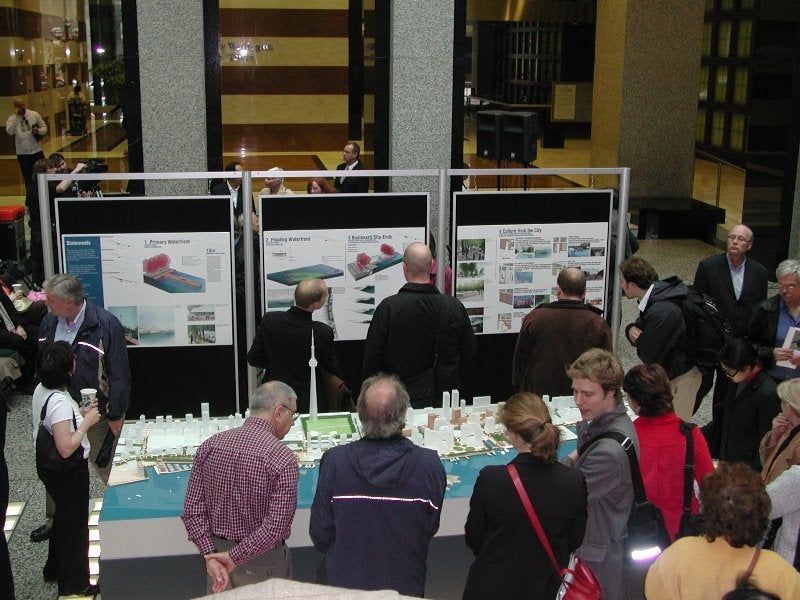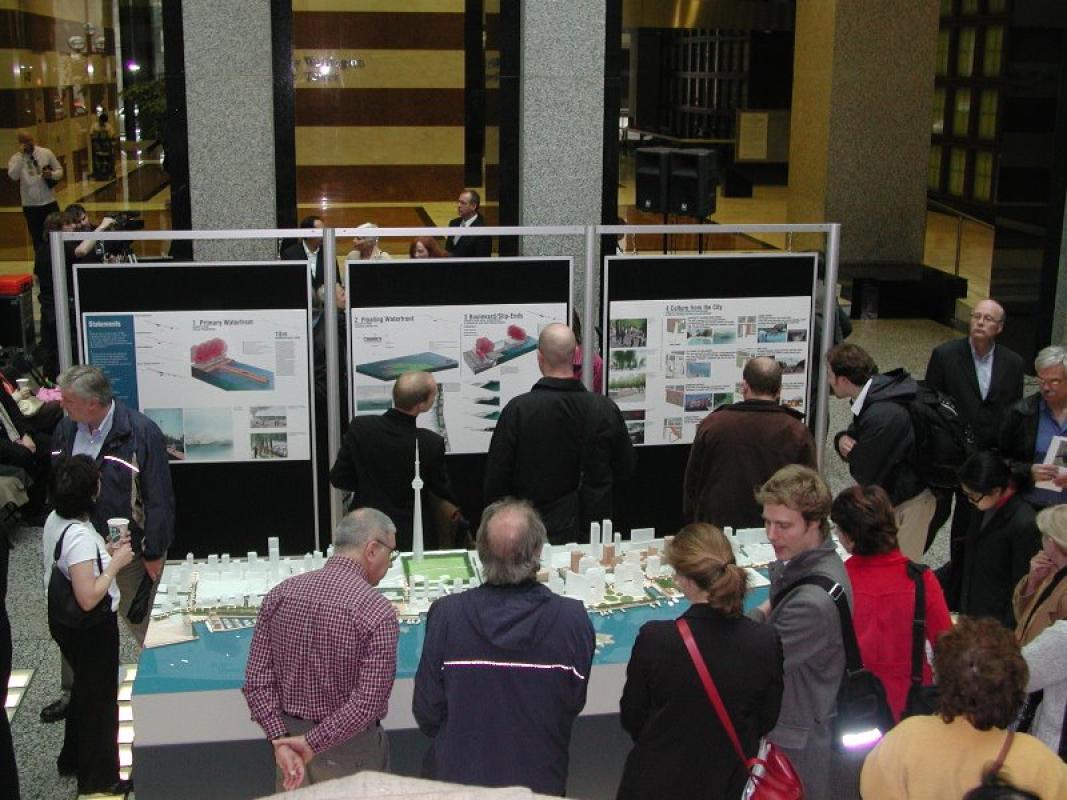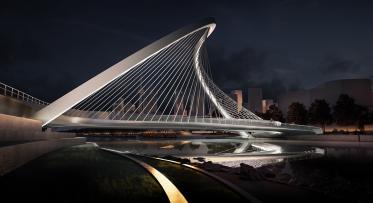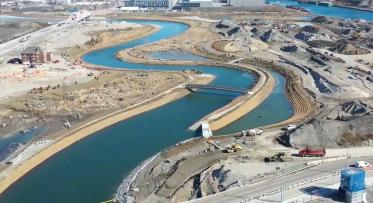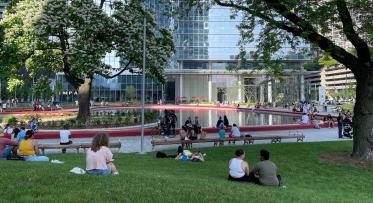How Public Consultations Elevate Park Design
Community members assemble around models and display boards at Brookfield Place during the Central Waterfront Design Competition.
POSTED: NOVEMBER 10, 2014
BY: MEGHAN HOGAN
If you had to choose, what would be your favourite park? More importantly, how would you explain why it’s your favourite park? Is it the location or the meandering trails? Or maybe you’re drawn to its creative play structures where your kids can romp around freely. There are endless elements that help create the exceptional parks we’ve come to know and love – elements that designers, architects and urban planners incorporate to capture our attention and satisfy our need for beautiful green spaces in the city.
But how do they delve into the urban psyche to understand exactly what it is that we want in a park and deliver on point? Well, two-way communication with the community is a great place to begin. I’m talking about public consultation – the process by which the public’s input on a particular matter affecting them is sought out.
And why shouldn’t it be? Parks are made for the community after all. Involving local citizens, businesses and institutions can help flesh out a wealth of knowledge and ideas that elevate a public space from ordinary to outstanding. In fact, we’re such fans of public consultation that we created a Public Consultation and Participation Strategy that guides our commitment to involving the community on our projects. We operate in one of the most complex urban communities in Canada and the public interests and expectations for the future of our waterfront are exceptionally high. We make it a priority to give the communities we work with the opportunity to contribute to the neighbourhoods they live, work and play in.
Some of our most popular public spaces are the result of an ongoing, extensive public consultation that gave us the tools to deliver a space worthy of the people of Toronto. Here’s a look at how public engagement has helped create some of the most memorable waterfront locations…
Canada's Sugar Beach
This whimsical urban beach located at the foot of lower Jarvis Street quickly became one of Toronto’s most famous parks – and that didn’t happen by accident. Long before we turned an ugly parking lot into the must-see waterfront attraction it is today, Waterfront Toronto was working hard with members of the public to design a park that would meet (and exceed) our desire for an iconic open space on the waterfront. In the early stages of precinct planning for East Bayfront, we began working closely with community stakeholder groups, landowners, school boards, and the City of Toronto to provide guidance, advice and feedback to improve and strengthen the plan for the area. Several public meetings were also held, where the design team sought input on issues and opportunities at every stage of the process. This collaborative effort helped shape a preferred direction for the area, including how to develop the Jarvis Slip, better known today as Canada’s Sugar Beach.
In 2008, we launched an innovative design competition to create a signature urban park at the foot of Lower Jarvis. We wanted a space that would anchor the new community and provide a flexible and dynamic public space. The jury was given the challenge of deciding the winning proposal, but not without plenty of feedback and advice from the public. We established two working groups to provide input throughout the design competition process. The Jarvis Slip Public Space Stakeholder Committee provided on-the-ground perspective of the problems and opportunities the local community saw with their day-to-day interactions with the area, while the Staff Advisory Team provided technical feedback.
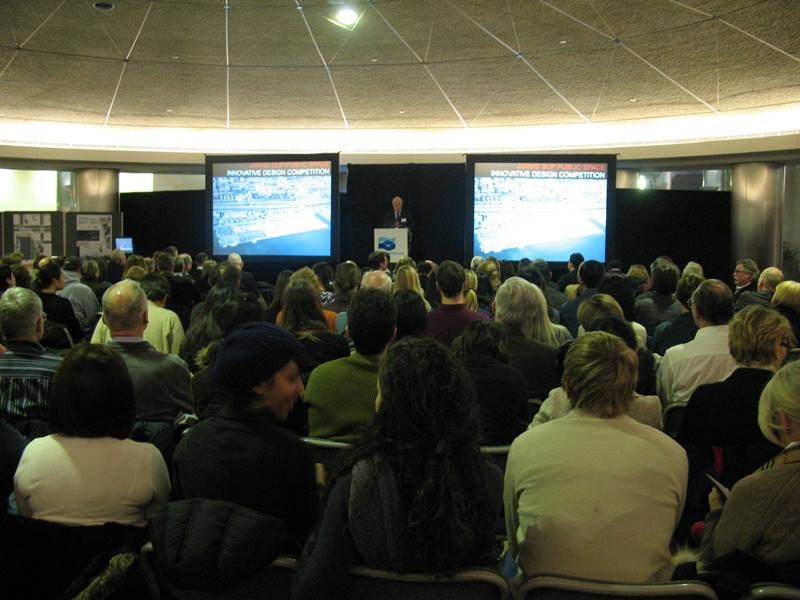
A large crowd gathers to hear more about the design proposals at the Jarvis Slip Design Competition Public Exhibition.
Holding a week-long public exhibition also gave us the opportunity to educate the community about the project, as well as gain their insight on the proposals. Visitors got to know a little bit about the competition process, what our jury members were looking for in a winning design and of course, take a look for themselves at the three design proposals. Not only that – but we also gave everyone the chance to tell us which design they preferred and suggest what features might bring them to visit the new public space. These recommendations were passed along to the jury and had a significant role in the deliberations process.
The winning design – Claude Cormier’s Sugar Beach – combined elements that each of these affected stakeholders envisioned for the space. And public consultation doesn’t end once design, or even after construction is complete – it’s an ongoing process.
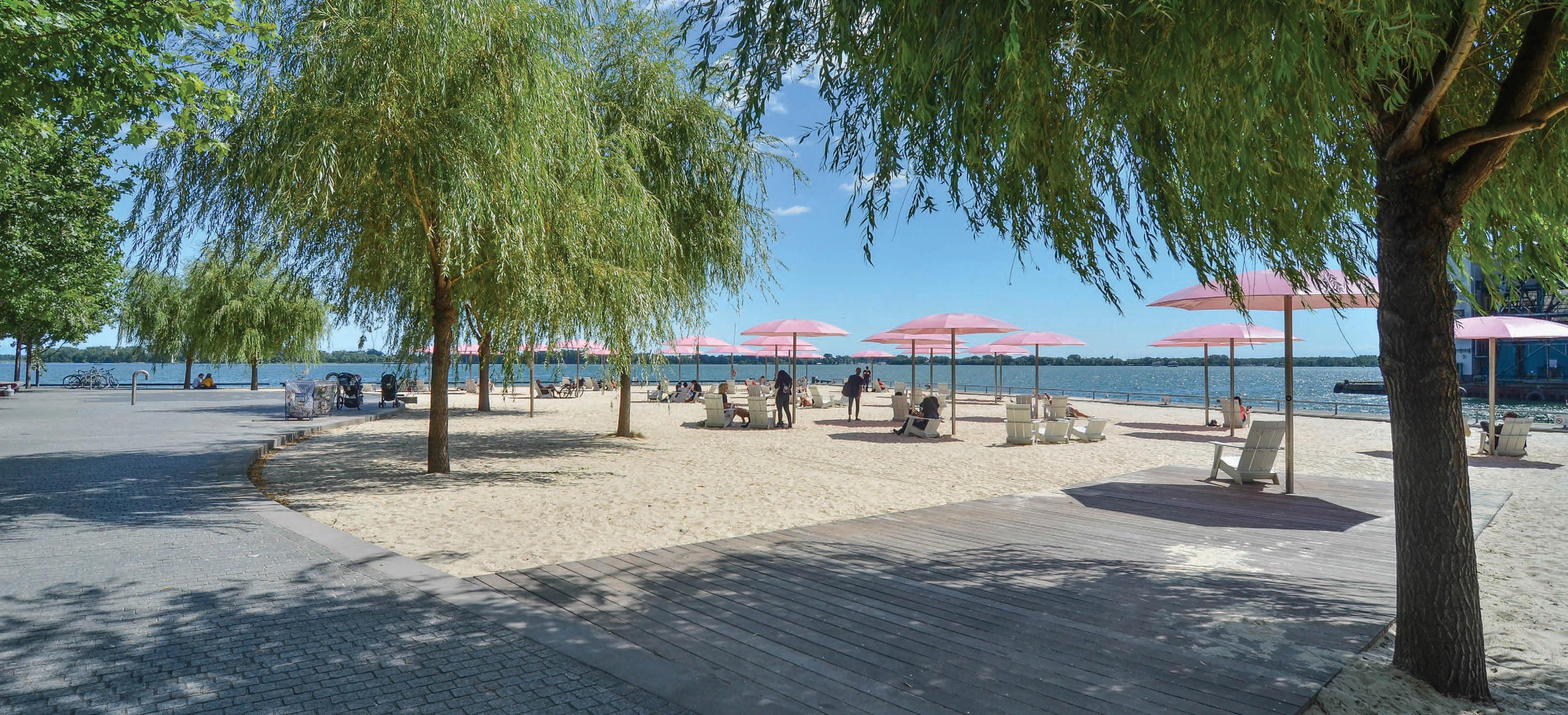
This accessible boardwalk allows wheelchair access to the inviting Muskoka chairs beneath the bright pink umbrellas at Sugar Beach.
For example, construction at Sugar Beach was already complete when a concerned citizen brought to our attention that there was no wheelchair access to any of the Muskoka chairs. Somehow this important feature had been overlooked and we quickly revised our design plan. Places like Sugar Beach don’t get built every day, but when they do, their success is dependent on the collaboration of all interested parties. Thanks to the public’s enthusiasm for this project, we’ve managed to create a space that is functional, beautiful and dare we say it – iconic.
It’s all in the details
When we look at some of the waterfront spaces we’ve created over the years, it’s difficult to select our favourite features without giving credit to the community who helped ensure they came to fruition. Like the wooden benches at Underpass Park in the West Don Lands that give a subtle hint of warmth amongst the concrete lines of this urban park. The original design only included backless concrete benches, but some of the seniors from the community longed for comfortable seating that provided some support while they watched their grandchildren enjoying the playground. The installation of the wooden benches met the community needs, but it also complemented the concrete and steel fixtures of the park in a delightful way.
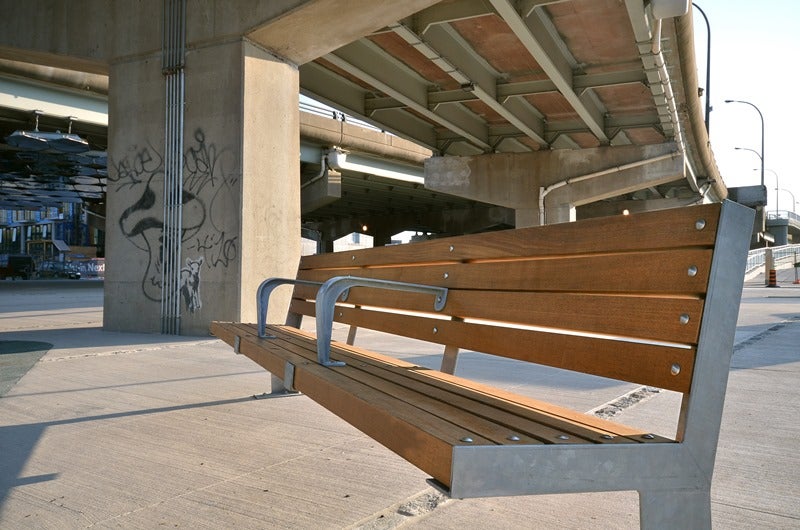
The wooden benches at Underpass Park were added to address seating issues that were brought to Waterfront Toronto’s attention after its completion.
Similarly, public consultation played a crucial role at Corktown Common, which is known equally for its stunning views of the city as it is for its flood protection features. At numerous public consultation sessions during the parks design stage, the community was asked for input on various design elements – from the play structures and the pavilion, to the lawns and trail systems.
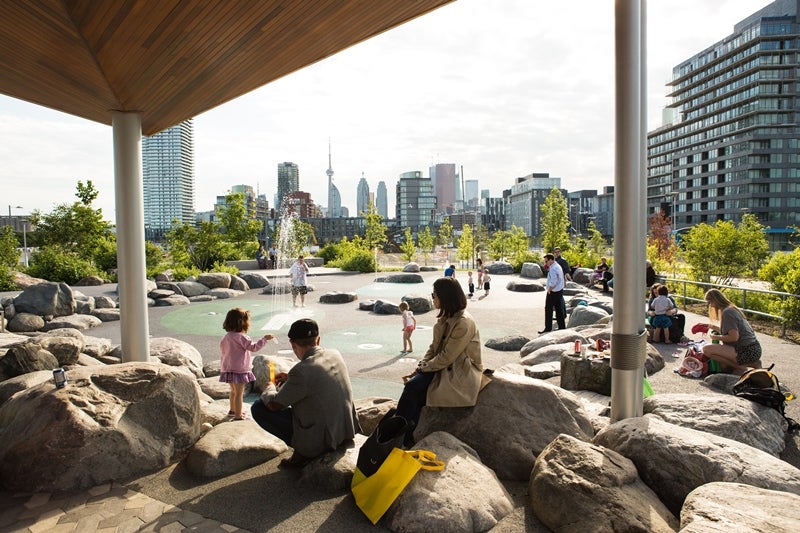
A stunning view of the downtown city skyline from the splash pad at Corktown Common.
Overwhelmingly, the public came to a consensus that creating spectacular vistas to the city and surrounding area was a highly desirable feature for this park. The design team, Michael Van Valkenburgh Associates Inc., took this recommendation to heart and created a park design that reflected what the community craved.
The drawbacks
Although we do our best to implement as much public input and as many recommendations as possible, the truth is – we can’t do it all. Unfortunately, there is a limited scope, funding and resources available for the development of each waterfront park and it’s our job to weave through the creative, innovative and sometimes common sense suggestions and make the tough calls. It’s our job to strike a balance between public input and professional design knowledge to produce projects with the greatest impact for the city.
Get involved
We encourage people of all ages and from every neighbourhood to involve themselves in our public consultations because it ensures our projects reflect the diversity of this city. People like you keep us accountable to our mandate and help guarantee that responsible decisions that reflect our collective vision are made.
We have a number of projects with ongoing public consultation that you can join at any time. Stop by to learn more about our projects or provide feedback and suggestions for a park near you. This is your waterfront.